Isolation In A Land Of Scarcity
Madagascar, West Coast
by Sarah Shuckburgh
The west coast of Madagascar is sublime, but poverty is rife, finds Sarah Shuckburgh. Tourism could make a difference.
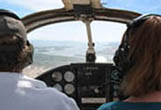 This
is the most exciting flight of my life. I am in the
co-pilot’s seat of a 4-seater plane, skimming just yards
above the beach along one of the world’s most remote and
sparsely-inhabited shores. A dazzling ribbon of white sand
unfurls beneath us, a narrow border between the sea and an
undulating patchwork of lowland forest and arid savannah –
semi-circular vistas of deep blue and khaki which fade into
infinity. No roads lead to this stretch of Madagascar’s
north-west coast - the only acce This
is the most exciting flight of my life. I am in the
co-pilot’s seat of a 4-seater plane, skimming just yards
above the beach along one of the world’s most remote and
sparsely-inhabited shores. A dazzling ribbon of white sand
unfurls beneath us, a narrow border between the sea and an
undulating patchwork of lowland forest and arid savannah –
semi-circular vistas of deep blue and khaki which fade into
infinity. No roads lead to this stretch of Madagascar’s
north-west coast - the only acce ss is by sea
or by light aircraft. ss is by sea
or by light aircraft.
The Mozambique Channel is a narrow strait, and we are nearer
to Africa here than we are to the island’s capital,
Antananarivo. And yet 165 million years have passed since
the tectonic shift which separated Madagascar from the
African continent.
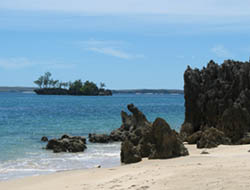 We fly over clusters of flimsy shacks, shaggily thatched.
Villagers emerge, crouching, from low doorways. They look up
and wave, and we wave back. Children scamper along the
beach, trying to race us. We are flying so near the ground
that it is almost like sitting on top of a bus. We fly over clusters of flimsy shacks, shaggily thatched.
Villagers emerge, crouching, from low doorways. They look up
and wave, and we wave back. Children scamper along the
beach, trying to race us. We are flying so near the ground
that it is almost like sitting on top of a bus.
Now we reach craggy limestone promontories and pinnacles -
spectacular karst outcrops, known locally as tsingy.
Birdlike, the plane swoops into fissured canyons and over
rugged grey cliffs topped with baobabs. Madagascar has seven
species of these strange trees, compared to Africa’s one.
Rain rarely falls on the west coast, and the baobabs’
bottle-shaped trunks have evolved to store water.
 Out to sea, white and beige-sailed boats with wooden
outriggers pitch and toss - dugouts of a design perhaps
unchanged since the island was first populated by
Indonesians a thousand years ago. Inland, plumes of smoke
rise – Malagasies still practise ‘tavy’, the traditional
custom of slash and burn which creates short-term grazing
for zebu cattle, but destroys vegetation and degrades the
soil. The dry deciduous forests of Madagascar’s west coast
are especially vulnerable to overgrazing, because trees grow
so slowly in the parched rocky soil. Out to sea, white and beige-sailed boats with wooden
outriggers pitch and toss - dugouts of a design perhaps
unchanged since the island was first populated by
Indonesians a thousand years ago. Inland, plumes of smoke
rise – Malagasies still practise ‘tavy’, the traditional
custom of slash and burn which creates short-term grazing
for zebu cattle, but destroys vegetation and degrades the
soil. The dry deciduous forests of Madagascar’s west coast
are especially vulnerable to overgrazing, because trees grow
so slowly in the parched rocky soil.
The pilot, Jacky Cauvin, wants me to see his guesthouse –
the Lodge des Terres Blanches - and we land on a bumpy
airstrip of red earth. A hot wind blows and exotic birds
flutter through the trees as we walk towards the forested
promontory where he has built eight small bungalows from
mangrove roots and rosewood. They are basic but very
romantic, and all facing the sparkling sea.
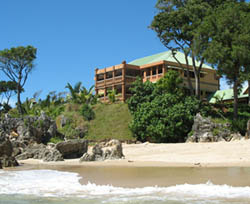 We board Jacky’s speed boat and continue north, bouncing
over choppy blue waves, slowing to explore lush mangrove
creeks, and whizzing on past sandy coves backed by dense
forest. At a horseshoe-shaped bay of knobbly karst outcrops,
Jacky stops the engine, and we enjoy the silence. A giant
ray swims by, just below the surface. As the boat engine
starts up, a rare Madagascan fish-eagle flaps out of a nest
on a tsingy outcrop and into a hazy blue sky, smudged with
puffy clouds. We board Jacky’s speed boat and continue north, bouncing
over choppy blue waves, slowing to explore lush mangrove
creeks, and whizzing on past sandy coves backed by dense
forest. At a horseshoe-shaped bay of knobbly karst outcrops,
Jacky stops the engine, and we enjoy the silence. A giant
ray swims by, just below the surface. As the boat engine
starts up, a rare Madagascan fish-eagle flaps out of a nest
on a tsingy outcrop and into a hazy blue sky, smudged with
puffy clouds.
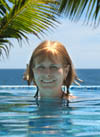 As the midday sun reaches its most blistering, we arrive at
an incongruous mansion – some would say folly - perched on
rocks at the end of a two-mile sweep of sand. Built by a
French film producer who discovered this pristine coast on
location ten years ago, Marovasa-Be is now a
‘barefoot-luxury’ guesthouse, with huge airy rooms, slatted
windows, elegant furniture and cool tiled floors. Outside,
an infinity pool is surrounded by tropical gardens. The
owner, Charles Gassot, welcomes us with a lunch of lobster
in a shady gazebo above the lapping waves. As the midday sun reaches its most blistering, we arrive at
an incongruous mansion – some would say folly - perched on
rocks at the end of a two-mile sweep of sand. Built by a
French film producer who discovered this pristine coast on
location ten years ago, Marovasa-Be is now a
‘barefoot-luxury’ guesthouse, with huge airy rooms, slatted
windows, elegant furniture and cool tiled floors. Outside,
an infinity pool is surrounded by tropical gardens. The
owner, Charles Gassot, welcomes us with a lunch of lobster
in a shady gazebo above the lapping waves.
The poverty in Madagascar is extreme, and statistics suggest
that it is amongst the poorest countries in the world. Only
one in three have drinking water. Literacy levels are below
40%. Infant mortality rates are high, and life expectancy is
65 for women and 55 for men. The average family size is
seven children, and more than half the population is under
20 years old.
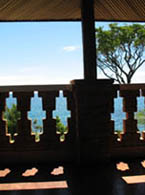 Half a million acres of forest are burnt each year to make
charcoal for cooking, and more is burnt to graze zebus – the
humpbacked cattle which, as emblems of status and
prosperity, are rarely eaten or sold. Facing destitution
because of deforestation and the subsequent degraded soil
and drought, rural families throng to Antananarivo - the
highland ‘town of 1000’ which now has two million residents
and at least half a million more, living on the streets. Barefoot children in tattered clothes beg with babies on
their hips, before curling up for the night in cardboard
boxes; toothless women and pregnant girls try to sell
vanilla pods or painted cards; ragged boys offer single
cigarettes. Sex tourism is rife. Half a million acres of forest are burnt each year to make
charcoal for cooking, and more is burnt to graze zebus – the
humpbacked cattle which, as emblems of status and
prosperity, are rarely eaten or sold. Facing destitution
because of deforestation and the subsequent degraded soil
and drought, rural families throng to Antananarivo - the
highland ‘town of 1000’ which now has two million residents
and at least half a million more, living on the streets. Barefoot children in tattered clothes beg with babies on
their hips, before curling up for the night in cardboard
boxes; toothless women and pregnant girls try to sell
vanilla pods or painted cards; ragged boys offer single
cigarettes. Sex tourism is rife.
The gap between rich and poor is startling. I stayed in a
lovely hotel in a cobbled street of French colonial houses,
next to a chateau that was once the presidential palace.
Built around a pretty courtyard, La Varangue has
high-ceilinged rooms packed with antiques. Shiny new 4x4s
filled the car park, and the restaurant, with its
dinner-jacketed maitre d’, was full of well-heeled
Malagasies. The contrast with the beggars outside the gate
was stark.
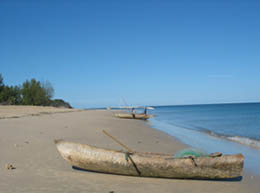 When Gassot first arrived at Marovasa, local families lived
on the beach in ramshackle hovels made of grass and palm.
Women carried water from a distant stagnant pond, and there
were no schools, books, electricity or sanitation. Gassot
has set up an NGO which aims to sustain rural life and
prevent the drift towards urban poverty. Ecoles du Monde has
already provided 42 wells and 18 water towers, 12 wind
machines, 14 sanitary blocks with lavatories, showers and
washrooms, a library, six medical centres, and ten schools
powered by solar energy. When Gassot first arrived at Marovasa, local families lived
on the beach in ramshackle hovels made of grass and palm.
Women carried water from a distant stagnant pond, and there
were no schools, books, electricity or sanitation. Gassot
has set up an NGO which aims to sustain rural life and
prevent the drift towards urban poverty. Ecoles du Monde has
already provided 42 wells and 18 water towers, 12 wind
machines, 14 sanitary blocks with lavatories, showers and
washrooms, a library, six medical centres, and ten schools
powered by solar energy.
Early the next morning, I stroll along the beach. The sand
is littered with twists of bleached coral, pastel-coloured
cowries and other shells. Crabs of various sizes, each as
pale as the sand, drag seaweed into their holes. I watch as
fishermen set out to sea in their dugout canoes, leaving
their children, black-skinned and African-looking, paddling
in the shallows.
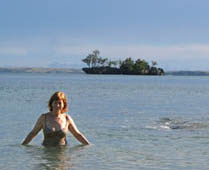 Back at the house, tiny scarlet fodies dart between the
fruit trees. A cloud of dragonflies bursts into the air. A
lizard basks on a sunny stone. In a tree, exotic parrots
call. Marovasa-Be can apparently be translated as ‘lots of
black parrots’ or as ‘many white strangers’ – and both
definitions apply. Back at the house, tiny scarlet fodies dart between the
fruit trees. A cloud of dragonflies bursts into the air. A
lizard basks on a sunny stone. In a tree, exotic parrots
call. Marovasa-Be can apparently be translated as ‘lots of
black parrots’ or as ‘many white strangers’ – and both
definitions apply.
After breakfast, Charles shows me the new village houses,
which, unlike the traditional shacks, are sturdy and tall
enough to stand in. Women are filling buckets from a
wind-pump to water their new vegetable plots, orchards and
flower gardens. Hundreds of yellow butterflies hover over a
puddle. At the school, chanting children fill the two
classrooms, and next door, their older sisters are learning
to use old-fashioned sewing machines.
 Charles Gassot is a feudal lord, a benevolent paternalist, a
responsible neo-colonialist - but it is hard to know what
locals make of him. At the guesthouse, he enforces exacting
standards of service which the staff must find bewildering –
for instance, the Spode china is to be used only at
breakfast. Like many Malagasy tribes, the Sakalava look to
their ancestors for wisdom and are wary of change. As
subsistence farmers, it is not their way to plan ahead,
plant trees or vegetables, or grow surplus crops to sell. Charles Gassot is a feudal lord, a benevolent paternalist, a
responsible neo-colonialist - but it is hard to know what
locals make of him. At the guesthouse, he enforces exacting
standards of service which the staff must find bewildering –
for instance, the Spode china is to be used only at
breakfast. Like many Malagasy tribes, the Sakalava look to
their ancestors for wisdom and are wary of change. As
subsistence farmers, it is not their way to plan ahead,
plant trees or vegetables, or grow surplus crops to sell.
Later, we bump inland in a 4x4, past lakes where crocodiles
lurk. Kingfishers swoop over the still water, and a flock of
ducks takes off in alarm as we pass. I clamber into a
limestone karst cave, avoided by locals who believe
ancestral stories of evil m onsters. Beyond is an
impenetrable tangle of evergreen shrubs and saplings beneath
gigantic deciduous trees, which shed their leaves to
conserve energy during the long dry season. Wildlife is hard
to spot, but we glimpse some enchanting-looking brown lemurs
and later a chameleon on a twig. All Madagascar’s mammals
are endemic, as are nearly all plants and reptiles and -
despite the proximity of Africa - half of all birds. onsters. Beyond is an
impenetrable tangle of evergreen shrubs and saplings beneath
gigantic deciduous trees, which shed their leaves to
conserve energy during the long dry season. Wildlife is hard
to spot, but we glimpse some enchanting-looking brown lemurs
and later a chameleon on a twig. All Madagascar’s mammals
are endemic, as are nearly all plants and reptiles and -
despite the proximity of Africa - half of all birds.
But even here in the sparsely-populated west of Madagascar,
the wildlife is endangered and most of the forest has been
destroyed. Charles Gassot’s plan is that visitors to
Marovasa will help to alleviate the island’s poverty and to
preserve the endangered ecosystem.
I am mulling this over - and sipping a rum arrangé - when I
hear a distant putter and Jacky swoops overhead. Charles
drives me through the scrub to his landing strip, and I
board for another thrilling flight along one of t he world’s
emptiest coasts. he world’s
emptiest coasts.
Sarah travelled with The Ultimate Travel Company
www.theultimatetravelcompany.co.uk
First published by the Telegraph
©SarahShuckburgh |